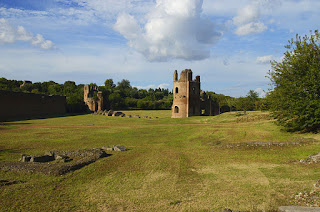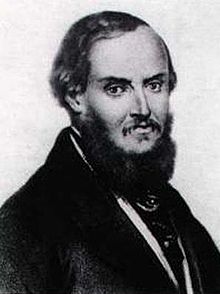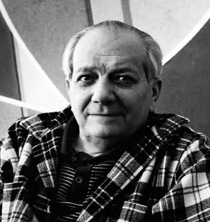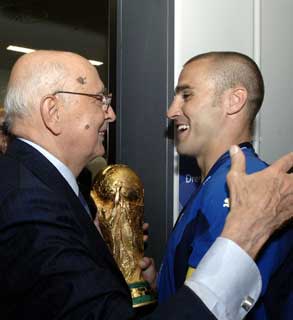Popular former communist twice elected Mayor of Rome
 |
| Walter Veltroni was the first leader of Italy's centre-left Democratic Party |
A popular figure, Veltroni helped the PD reach a level of influence in Italian politics that enabled them to provide the leaders of three consecutive governments in Enrico Letta, Matteo Renzi and Paolo Gentiloni before the centre-left were routed at the 2018 general election.
Veltroni had such charisma and broad appeal that he was often tipped as a future prime minister, but his star began to wane after he lost the April 2008 general election in a head-to-head with Silvio Berlusconi’s centre-right People of Freedom party.
He had stepped down as Mayor of Rome in order to focus on winning the election so defeat was a crushing blow. In February 2009, following a heavy defeat for PD in regional elections in Sardinia and amid clashes within the party, he resigned as leader, giving way to his former deputy, Dario Franceschini.
Veltroni's political career had begun in 1976, when he was elected as a Rome city councillor as a member of the Italian Communist Party (PCI).
 |
| Veltroni served two terms as Mayor of Rome |
Veltroni was the son of a manager in the RAI broadcasting network. His maternal grandfather had been a Slovenian diplomat in the Catholic Church who had helped many Jews and anti-fascists escape Nazi persecution in 1943.
A journalist by trade, he rose to the position of editor-in-chief of L'Unità, the newspaper of the the reconstituted Communist party, the Democratic Party of the Left (PDS). His reputation was that of a progressive, however, and he was a driving force in turning the party into a social democratic movement. Under his stewardship, sales of the paper rose by almost a third to 151,000.
Elected to the Chamber of Deputies in 1987, he became a minister in Romano Prodi’s centre-left government in 1996 but resigned in 1998 prior to being elected leader of the new Democrats of the Left party (DS), a position he held until he was elected as Mayor of Rome for the first time in 2001.
He served two terms as Mayor, on the second occasion being elected after securing an unprecedented 61.4 per cent of the vote.
Critics say Veltroni achieved very little tangible progress for Rome as Mayor, failing to solve the city’s mounting traffic problems or to stop rising crime levels.
 |
| Veltroni embraces George Clooney after conducting the film star's marriage in Venice |
One of the stars with whom he became closely acquainted was George Clooney, who saw in Veltroni similarities with the American Democratic president Bill Clinton. Later, after Veltroni had taken a back seat in Italian politics, Clooney asked Veltroni to conduct his marriage to his Anglo-Lebanese fiancee Ama Alamuddin, the ceremony taking place in Venice.
Whatever he did or did not achieve, whether his association with celebrities was fitting for a politician or not, Veltroni’s supporters say he promoted a culture of openness and tolerance, of solidarity and welcome in the capital.
 |
| The ruins of the Circus of Maxentius on Via Antica Appia |
Visitors to Rome tend to head for the major tourist attractions such as the Spanish Steps, the Trevi Fountain, the Colosseum and St Peter’s Basilica, but these places are inevitably thronged with visitors, especially in the summer months. For a more peaceful experience, try a walk along the first stretch of the Via Appia Antica - the Appian Way - the ancient Roman road that linked Rome with the port of Brindisi some 550km (340 miles) away in the southeast corner of the peninsula. Beginning at Porto San Sebastiano, two miles south of the Colosseum, while some of the road is open to traffic other sections are preserved in their original form, passing through pleasant parkland, and there are numerous catacombs, tombs and other ruins along the way.
| The beautiful porticoed facade of the Basilica of St Paul Outside the Walls in the Ostiense district |
Another place in Rome where crowds are likely to be less overwhelming is the Basilica of St Paul Outside the Walls, which was built on the site of the burial place of the Apostle Paul, in the Ostiense district south of the city centre. There has been a church on the site since the 4th century but most of the current structure is much newer, a fire in 1823 having destroyed much of the basilica itself, which dates back to 395. The reconstruction, though, produced a magnificent building, reopened in 1840, lavishly decorated with gold mosaics and marble columns that made for a strikingly beautiful interior. The facade, also decorated with gold mosaic, is guarded by an atrium of 150 pillars with a statue of St Paul in the centre.
More reading:
Paolo Gentiloni - the modern centre-left prime minister descended from nobility
How Matteo Renzi was inspired by the scout movement
When Italy almost had a Communist prime minister
Also on this day:
1871: The birth of Ulisse Stacchini, architect of Milan landmarks
1900: The birth of film director Alessandro Blasetti
Home






















